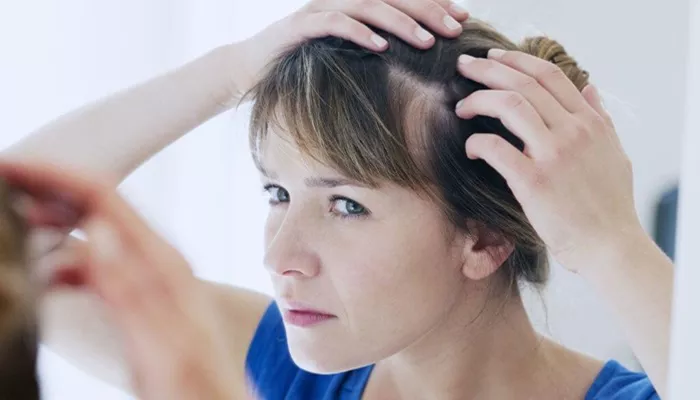Hair loss is a common concern that affects millions of people worldwide. While shedding some hair daily is normal, excessive hair fall—especially when simply touching or running fingers through your hair—can be alarming. Several factors contribute to this issue, ranging from natural shedding cycles to underlying medical conditions. Understanding why your hair falls out when touched requires exploring hair growth phases, potential triggers, and possible treatments.
The Natural Hair Growth Cycle
Hair growth occurs in a cyclical pattern consisting of three main phases: anagen, catagen, and telogen.
Anagen Phase (Growth Phase): This is the active growth period, lasting between two to seven years. The longer this phase, the longer your hair grows.
Catagen Phase (Transition Phase): A short period (about two weeks) where hair follicles shrink and detach from the blood supply, signaling the end of active growth.
Telogen Phase (Resting Phase): Lasting around three months, this phase ends with the hair strand shedding naturally. On average, losing 50 to 100 hairs per day is normal.
If you notice more hair falling out when touched, it could mean that a higher number of hairs are in the telogen phase than usual. This condition, known as telogen effluvium, can be triggered by various factors, including stress, illness, or hormonal changes.
Common Causes of Excessive Hair Shedding When Touched
Several reasons may explain why your hair falls out more easily when touched. These include:
Physical Stress or Trauma to the Hair
Repeated pulling, tight hairstyles (like ponytails or braids), or aggressive brushing can weaken hair roots, leading to breakage or shedding. A condition called traction alopecia occurs when constant tension causes hair to loosen from the follicle. If you frequently tie your hair tightly or use harsh styling tools, you may notice more hair coming out when you touch it.
Nutritional Deficiencies
Hair follicles require essential nutrients to maintain healthy growth. Deficiencies in iron, zinc, vitamin D, or protein can lead to weakened hair shafts, making them more prone to falling out. Iron deficiency anemia, in particular, is a well-known cause of hair shedding. If your diet lacks these nutrients, your hair may become brittle and easily dislodged.
Hormonal Imbalances
Hormones play a crucial role in hair health. Conditions such as thyroid disorders (hypothyroidism or hyperthyroidism), postpartum hormonal changes, or menopause can disrupt the hair growth cycle. For example, after pregnancy, many women experience significant hair shedding due to a drop in estrogen levels. Similarly, thyroid imbalances can lead to diffuse thinning, where hair falls out more easily when touched.
Scalp Conditions
An unhealthy scalp environment can contribute to hair loss. Conditions like seborrheic dermatitis (dandruff), psoriasis, or fungal infections (such as tinea capitis) can weaken hair follicles. Inflammation and excess oil production may cause hair to detach more easily when combing or touching.
Stress and Emotional Factors
Both physical and emotional stress can push hair follicles into the telogen phase prematurely. Events such as surgery, severe illness, or emotional trauma can trigger telogen effluvium, leading to noticeable hair shedding weeks or months later. If you’ve been under significant stress, you may find more hair coming out when you run your hands through it.
Overwashing or Harsh Hair Products
Frequent washing, especially with sulfate-heavy shampoos, can strip the scalp of natural oils, leading to dryness and breakage. Similarly, chemical treatments (like bleaching, perming, or excessive heat styling) can weaken hair, making it more prone to falling out when touched.
Genetic Predisposition
If hair loss runs in your family, you may be experiencing early signs of androgenetic alopecia (male or female pattern baldness). This type of hair loss is gradual but can make hair thinner and more fragile over time, increasing shedding when touched.
Diagnosing the Underlying Cause
If you’re concerned about excessive hair fall, consulting a dermatologist or trichologist is essential. They may perform:
- Blood tests to check for deficiencies or hormonal imbalances.
- Scalp biopsy to examine follicle health.
- Pull test to assess how easily hair comes out.
Identifying the root cause helps determine the best treatment approach.
Treatment and Prevention Strategies
Depending on the cause, various treatments can help reduce hair shedding:
Improving Nutrition
A balanced diet rich in proteins, iron, omega-3 fatty acids, and vitamins (especially biotin and vitamin D) supports hair strength. Consider supplements if deficiencies are detected.
Gentle Hair Care Practices
- Avoid tight hairstyles that pull on roots.
- Use a wide-tooth comb instead of brushes.
- Limit heat styling and chemical treatments.
- Opt for sulfate-free, moisturizing shampoos.
Medical Treatments
- Minoxidil (Rogaine): A topical treatment that stimulates hair growth.
- Hormone therapy: For conditions like PCOS or thyroid disorders.
- Anti-fungal treatments: If scalp infections are present.
Stress Management
Practicing relaxation techniques (yoga, meditation) and ensuring adequate sleep can help reduce stress-related shedding.
When to Seek Professional Help
If hair loss persists despite lifestyle changes, or if you notice patches of baldness, consult a doctor. Early intervention can prevent further thinning and improve regrowth chances.
Conclusion
Hair falling out when touched can be distressing, but understanding the underlying causes is the first step toward addressing it. Whether due to stress, nutritional gaps, or medical conditions, most cases are treatable with the right approach. By adopting healthier hair care habits and seeking professional guidance, you can restore your hair’s strength and reduce excessive shedding.
Related Topics:
- What Is Involved in Understanding Hair Loss and How Can…
- Which Month Does Hair Fall Out the Most?
- Understanding Excessive Hair Fall: Causes and Solutions


